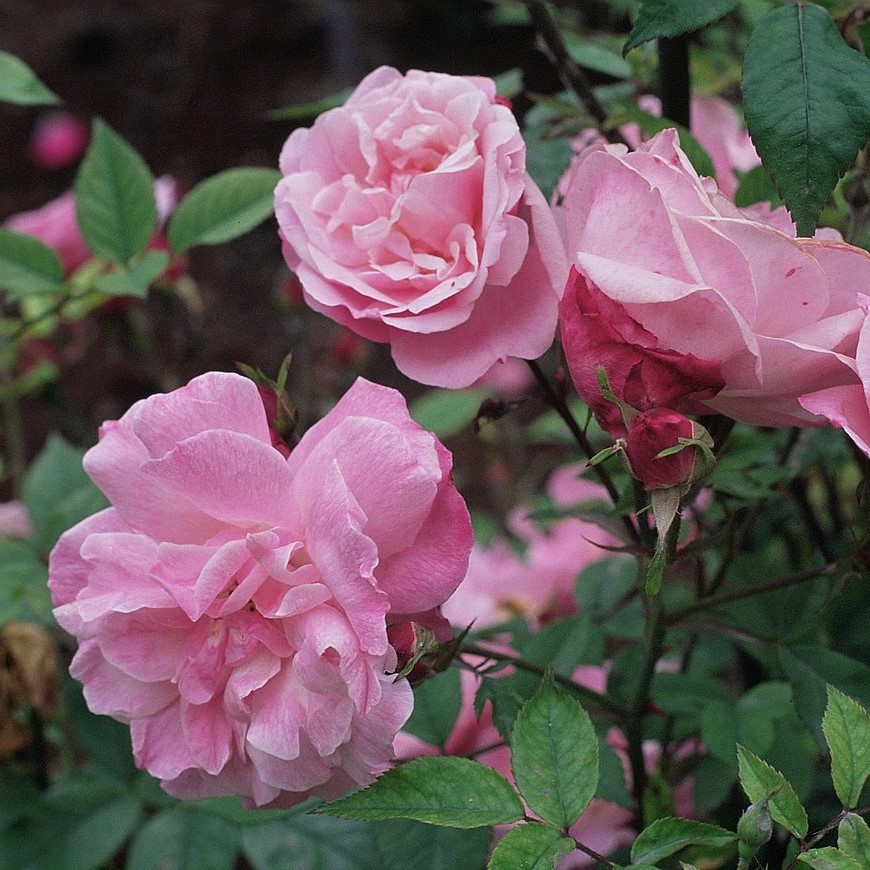Almost 35 per cent of all known botanical roses originate from China, so it is surprising that the Chinese should have chosen the Peony and the Chrysanthemum as their national flowers, rather than the Rose.
Chinensis Roses have an extraordinary quality: they repeat. If Modern Roses flower for a very long season, this is because their ancestors were crossed in the 19th century with Chinese garden roses. Apart from repea-ting, Chinese Roses have some other features that make them differ from European Old Roses: the young branches and the young leaves have a reddish hue; the leaves are flat, pointed; they are not very thorny; while the red of European old Roses generally has a touch of purple, of crimson, of lilac, of magenta, the red of Chinese Roses can be pure carmine, or even vermilion.
The four roses imported from China which are responsible for these great changes are not botanical roses, but hybrids brought over from Canton gardens:
Slater’s Crimson China (1792);
Parson’s Pink China (1793);
Hume’s Blush Tea-Scented China (1809) and Park’s Yellow Tea-Scented China (1892).
Yellow Tea-Scented China of Park (1824).
But which are the "species" from which these roses originate?
Certainly one is R. gigantea, from which "Park's and in Quingchuan, but with white flowers, pink flowers, white flowers which aging became crimson, yellow flowers which took an orange hue (a bit like what happened to us on our 1997 Zhongdian trip, when we found white roses which aging became pink, and the two colours sericea found near Ganden).
In the following list we describe to start with the four "grandmothers" of Modern Roses, all imported from China, and afterwards the European varieties.
At the end of this chapter we describe the garden roses, possibly of Chinese origin, which we have brought over from India and Pakistan and propagated by cuttings.
They are bushes of medium size, not very full, with dark leaves (reddish when young), double or semi-double very fragrant smallish flowers.


